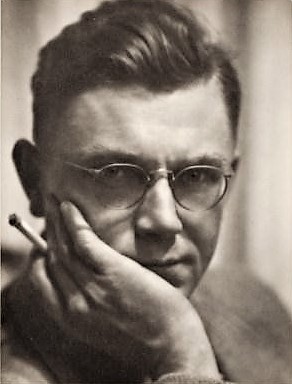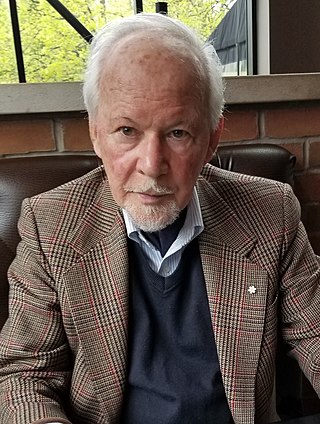Related Research Articles

Emily Carr was a Canadian artist and writer who was inspired by the Indigenous peoples of the Pacific Northwest Coast. One of the first painters in Canada to adopt a Modernist and Post-Impressionist style, Carr did not receive widespread recognition for her 1929 work, The Indian Church, which is now her best known, until she changed her subject matter from Aboriginal themes to landscapes — forest scenes in particular, evoking primeval grandeur in British Columbia. As a writer Carr was one of the earliest chroniclers of life in her surroundings. The Canadian Encyclopedia describes her as a Canadian icon.

Alfred Pellan was an important figure in twentieth-century Canadian painting.

Lawren Stewart Harris LL. D. was a Canadian painter, best known as a leading member of the Group of Seven. He played a key role as a catalyst in Canadian art and as a visionary in Canadian landscape art.
Roy Arden is a Canadian artist. He also creates sculpture from found objects, oil paintings, graphite drawings and collage, and curates and writes on contemporary art.
J. Russell Harper D.Litt. D.F.A. FRSC was a Canadian art historian and curator who pioneered the field of art history in Canada.
William Goodridge Roberts (1904–1974) was a Canadian painter known for his landscape paintings, still lifes, figure paintings and interiors. He was also a teacher.

Evergon, also known by the names of his alter-egos Celluloso Evergoni, Egon Brut, and Eve R. Gonzales, is a Canadian artist, teacher and activist. Throughout his career, his work has explored photography and its related forms, including photo-collage, instant photography, colour photocopying, and holography.
Emily Coonan was a Canadian impressionist and post-impressionist painter, born in the Pointe-Saint-Charles area of Montreal. As a member of the Beaver Hall Group, Coonan mostly did figure paintings. Influenced by William Brymner and James Wilson Morrice in early years and later on by work done in Europe, Coonan's work has features that are related both to impressionism and modernism.
Daina Augaitis is a Canadian curator whose work focuses on contemporary art. From 1996 to 2017, she was the chief curator and associate director of the Vancouver Art Gallery in British Columbia.
Lorna Brown is a Canadian artist, curator and writer. Her work focuses on public space, social phenomena such as boredom, and institutional structures and systems.
Lillian Irene Hoffar Reid was a Canadian painter. She was in the first graduating class, June 1929, at the Vancouver School of Decorative and Applied Art. She taught at the Vancouver School of Art from 1933 to 1937.

Philip Surrey LL. D. (1910-1990) was a Canadian artist known for his figurative scenes of Montreal. A founding member of the Contemporary Arts Society, and Montreal Men's Press Club, Surrey was part of Montreal's cultural elite during the late 1930s and 1940s. In recognition of his artistic accomplishment he was elected to the Royal Canadian Academy of Arts, awarded a Canadian Centennial Medal in 1967 and was appointed to the Order of Canada in 1982.
Angela Grauerholz D.F.A. is a German-born Canadian photographer, graphic designer and educator living in Montreal.
Judith Schwarz is a Canadian visual artist. Her work has been featured in exhibitions since 1979.
Karen Tam is a Canadian artist and curator who focuses on the constructions and imaginations of cultures and communities through installations in which she recreates Chinese restaurants, karaoke lounges, opium dens, curio shops and other sites of cultural encounters. She is based in Montreal, Quebec.
Michelle Jacques is a Canadian curator and educator known for her expertise in combining historical and contemporary art, and for her championship of regional artists. Originally from Ontario, born in Toronto to parents of Caribbean origin, who immigrated to Canada in the 1960s, she is now based in Saskatoon, Saskatchewan.
Leopold Plotek, combines abstraction and figuration in large format paintings which take as their starting point his memories, his experience of architecture, objects and art, as well as his readings in art, history, and poetry of all periods. His references are elliptically treated however, as he develops ways of painting them according to his own recipe which varies, picture to picture. In this singular pictorial dynamic, each painting is basically a conception on its own, though a series of sorts can exist. As a result, certain of Plotek’s paintings prefigure the practice of many contemporary abstract painters and can be viewed, like them, as extending the range of abstraction.

James W. Borcoman D.F.A. LL. D., also known as Jim Borcoman, was the founding curator of photography, National Gallery of Canada from 1971 to 1994. He was a pioneer in promoting photography as an art form in Canada, having established the Photographs Collection at the National Gallery in 1967 as the first of its kind in Canada, and developing its growth to over 19,000 objects, resulting in a collection known for the quality of its nineteenth and twentieth century holdings and for its exhibitions and publications. He also promoted contemporary Canadian photographers and was himself a photographer with work in the collection of the National Gallery of Canada.
Doris Shadbolt, née Meisel LL. D. D.F.A. was an art historian, author, curator, cultural bureaucrat, educator and philanthropist who had an important impact on the development of Canadian art and culture.
Brian Frederick Foss is an art historian, academic, curator, and writer who specializes in the art history of Canada and British war art, especially of the late 19th and early 20th centuries.
References
- ↑ "Mr. Charles C. Hill". The Governor General of Canada. Governor General of Canada. Retrieved 23 November 2020.
- ↑ Alicia Boutilier, Review of 1920s Modernism in Montreal: The Beaver Hall Group, in Journal of Canadian Art History, vol. 36, no. 2 (2015): 152.
- 1 2 3 4 Ketchum, W. Q. (8 March 1975). "Faces of Ottawa: Charles C. Hill". Ottawa Journal. Retrieved 23 November 2020.
- 1 2 Baele, Nancy (1 June 1984). "keeping current with Canadian art". The Ottawa Citizen. Retrieved 23 November 2020.
- ↑ Simpson, Peter. "Charlie Hill looks back on 47 years at National Gallery". ottawacitizen.com. Ottawa Citizen, 20 October 2014. Retrieved 23 November 2020.
- 1 2 3 Gessell, Paul (2013). "Art, Activism, and the Swan Song of Charlie Hill". Ottawa Magazine. Retrieved 23 November 2020.
- ↑ Tousley, Nancy (1980). "Development of Canadian Art". Calgary Herald, 17 Sept 1980. www.newspapers.com. Retrieved 15 February 2021.
- ↑ Adams, James (8 October 2014). "Curator's departure from the National Gallery of Canada proves 'bittersweet'". The Globe and Mail. The Globe and Mail, 8 October 2014. Retrieved 23 November 2020.
- ↑ "Charles Hill, National Gallery Canadian art curator, retires". www.cbc.ca. Canadian Broadcasting Company, 2014. Retrieved 23 November 2020.
- ↑ "Charles C. Hill, Honorary Doctorate". www.concordia.ca. Concordia University, Montreal. Retrieved 25 September 2021.
- ↑ McKinnon, Neil. "Charlie Hill: from protest to the Order of Canada". www.dailyxtra.com. Dailyxtra, 6 July 2011.
Bibliography
- Fulford, Robert (1995). "Charles Hill: Regrouping the Group of Seven" (PDF). Canadian Art. Retrieved 23 November 2020.
- Jessup, Lynda (1996). "Art for a Nation?". Fuse Magazine (summer 1996): 11–14. ISBN 9780773590960 . Retrieved 24 November 2020.
- Lacroix, Laurier (2010). "Writing art history in the Twentieth Century", The Visual Arts in Canada: the Twentieth Century. Foss, Brian., Paikowsky, Sandra., Whitelaw, Anne (eds.). Don Mills, Ont.: Oxford University Press. p. 173. ISBN 978-0-19-542125-5. OCLC 432401392.